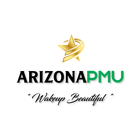Microneedling in the Periorbital Region: Techniques for Precision and Comfort
Microneedling in the periorbital area—around the eyes—requires a specialized approach to reduce fine lines, wrinkles, and mild skin laxity. Given the delicate, thin nature of the skin in this region, practitioners must apply refined techniques to maximize both safety and effectiveness. This guide from AZ PMU Academy outlines best practices for periorbital microneedling, focusing on needle depth, patient positioning, and controlled techniques that enhance results and patient comfort.
Adjusting Needle Depth for Delicate Skin: Reducing Trauma for Patient Comfort
The periorbital skin is significantly thinner and more sensitive than other areas of the face. Reducing needle depth to 0.1–0.25 mm is recommended to prevent trauma and discomfort. This shallower penetration helps stimulate collagen production effectively while minimizing irritation, bruising, and other adverse reactions.
Key Benefit: Using a shallow depth specifically targets fine lines and mild laxity around the eyes, ensuring both efficacy and patient comfort.
Optimized Techniques for Enhanced Precision
Patient Gaze Adjustment for Expanded Treatment Area
Directing the patient's gaze can improve access to delicate areas and enhance safety. Asking the patient to look up or down naturally stretches the skin, creating a larger, smoother surface for treatment. Gently stabilizing and stretching the skin with your free hand allows precise treatment on the upper eyelid and brow bone.
Treating Above the Eye (Upper Eyelid and Brow Bone)
Instruct the patient to look downward, relaxing the skin of the upper eyelid for easier access and reduced risk of contact with the eye. Use your free hand to stretch the skin gently, treating the entire upper eyelid and brow area accurately.
Treating Below the Eye (Under-Eye Area and Tear Trough)
For the under-eye region, direct the patient to look upward, which stretches the skin and provides a smooth surface for treatment. Stabilize the skin with your free hand to ensure precise needle placement.
Gentle, Controlled Movements for Sensitive Skin
The periorbital area requires a lighter touch compared to other facial regions. Apply gentler pressure and slow, controlled movements to reduce trauma and patient discomfort. This conservative approach helps minimize inflammation, making the procedure more comfortable. Two recommended techniques include:
- Tracing Technique: Begin at the inner corner of the eye and move outward in consistent passes. Maintain uniform depth and speed for even microchannel formation.
- Stamping Technique: Gently press the device against the skin, hold briefly, then lift and move from the inner to the outer corner of the eye. Repeat in three passes, covering the area without excessive pressure.
Managing Serum Application for Optimal Glide and Safety
To maintain effectiveness, the skin should be lightly moist but not overly saturated. Apply a thin, even layer of serum to ensure the device glides smoothly, avoiding the risk of serum entering the eyes. Keep sterile gauze nearby to quickly blot excess serum as needed.
Pro Tip: Proper moisture control prevents serum from pooling or running into sensitive areas like the tear trough or upper eyelid.


Leave a comment